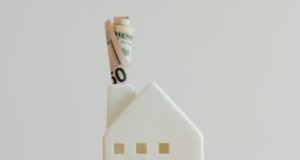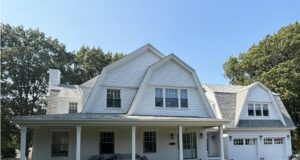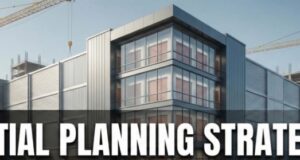Recipients of USGBC’s Affordable Green Neighborhoods Grant Program Announced at Greenbuild
$500,000 grant from the Bank of America Charitable Foundation assists projects pursuing LEED for Neighborhood Development
Chicago, IL – November 17, 2010 – (RealEstateRama) — Today, the U.S. Green Building Council (USGBC) and Bank of America announced the ten recipients of the Affordable Green Neighborhoods Grant Program. Funded by a $500,000 grant from the Bank of America Charitable Foundation, the program awards financial and educational resources to help neighborhood projects that have affordable green housing components in their plans pursue LEED for Neighborhood Development. LEED for Neighborhood Development is a green rating system from USGBC that certifies whole neighborhoods, portions of neighborhoods or multiple neighborhoods. The selected development projects were announced at the Affordable Housing Summit at USGBC’s Greenbuild International Conference & Expo.
“Through the very generous support of the Bank of America Charitable Foundation, ten communities across the country will see the transformation of vacant or underutilized land in thriving existing neighborhoods into walkable, compact developments,” said Roger Platt, Senior Vice President, Global Policy & Law, USGBC. “The recipients have demonstrated a commitment toward strengthening their communities by providing healthy, affordable green housing to citizens with a range of income levels.” “Supporting environmentally healthy communities is one way Bank of America is helping set opportunity in motion to revitalize local economies and neighborhoods,” said Alex Liftman, Global Environmental Executive, Bank of America. “We congratulate all of the Affordable Green Neighborhoods awardees for their outstanding projects, and hope that by offsetting the cost of LEED for Neighborhood Development training and certification we can help advance a shift to greener, healthier, more affordable housing, and sustainable community planning.”
The Affordable Green Neighborhoods Grant recipients include:
• 9th and Berks TOD, Philadelphia, PA
• Church Lane Gardens, St Louis, MO
• Clackamas Heights Redevelopment, Oregon City, OR
• Jordan Downs, Los Angeles, CA
• Lamar Station TOD, Lakewood, CO
• Old Colony Redevelopment, Boston, MA
• Sunnydale Hope SF, San Francisco, CA
• The Village at Market Creek, San Diego, CA
• Veterans Place at The Lancaster Corridor, Dallas, TX
• Wyandanch Rising, Wyandanch, NY
“The Affordable Green Neighborhoods grant will provide the financial support to successfully complete the Clackamas Heights Redevelopment in a highly green and sustainable manner,” said grant recipient Mary Bradshaw, Development Project Manager for the Clackamas Heights Redevelopment Housing Authority of Clackamas County (HACC). “HACC recognizes the importance of third-party certification through the LEED for Neighborhood Development program as integral to our future success.”
The National Low Income Housing Coalition estimates that over 6.5 million low-income families spend more than 50% of their income on housing and utility costs. Greening affordable housing reduces energy and resource use, resulting in lower operating costs and utility bills for tenants and their families. USGBC’s LEED for Neighborhood Development integrates the principles of smart growth, new urbanism and green building and benefits communities by reducing urban sprawl, increasing transportation choice and decreasing automobile dependence, encouraging healthy living, and protecting threatened species. The Affordable Green Neighborhoods Grant Program selection committee consisted of the following affordable housing and smart growth experts:
• Dana Bourland, Enterprise Community Partners
• Carlton Brown, Full Spectrum NY
• Anita Hairston, PolicyLink
• David Leopold, Bank of America
• Casius Pealer, Builders of Hope
• Benjamin de la Peña, The Rockefeller Foundation
• Tim Torma, Office of Sustainable Communities, U.S. EPA
To learn more about the Affordable Green Neighborhoods Grant Program visit www.usgbc.org/affordablegreenneighborhoods.
###
U.S. Green Building Council
The Washington, D.C.-based U.S. Green Building Council is committed to a prosperous and sustainable future for our nation through cost-efficient and energy-saving green buildings.
With a community comprising 80 local affiliates, 18,000 member companies and organizations, and more than 155,000 LEED Professional Credential holders, USGBC is the driving force of an industry that is projected to contribute $554 billion to the U.S. gross domestic product from 2009-2013. USGBC leads an unlikely diverse constituency of builders and environmentalists, corporations and nonprofit organizations, elected officials and concerned citizens, and teachers and students.
Buildings in the United States are responsible for 39% of CO2 emissions, 40% of energy consumption, 13% water consumption and 15% of GDP per year, making green building a source of significant economic and environmental opportunity. Greater building efficiency can meet 85% of future U.S. demand for energy, and a national commitment to green building has the potential to generate 2.5 million American jobs.
About Greenbuild
The U.S. Green Building Council’s Annual Greenbuild Conference & Expo provides an unrivaled opportunity to learn about the latest innovations, explore new products and exchange ideas with other professionals. Greenbuild is the world’s largest green building conference and represents all sectors of the green building movement. Three days of extensive educational programming, workshops, a vast exhibition floor and ample networking events provide unrivaled opportunities to learn about the latest technological innovations, explore new products, and exchange ideas with other professionals.
Greenbuild is the three time recipient of IMEX Green Meetings Award and four time winner of Tradeshow Week’s Fastest 50 growing tradeshows in the U.S. The 2010 show will be held on Nov. 17-19, 2010, in Chicago, Illinois with 40,000 expected attendees and nearly 2000 exhibit booths. Visit www.greenbuildexpo.org for more information.
Bank of America Corporate Philanthropy
Building on a long-standing tradition of investing in the communities it serves, last year Bank of America embarked on a new, 10-year goal to donate $2 billion to nonprofit organizations engaged in improving the health and vitality of their neighborhoods. Funded by Bank of America, the Bank of America Charitable Foundation gave more than $200 million in 2009, making the bank one of the largest corporate cash donors in the United States. Bank of America approaches investing through a national strategy under which it works with local leaders to identify and meet the most pressing needs of individual communities. Reaffirming a commitment to develop and sustain a culture of service, the bank announced the “Million Hour Challenge,” a pledge by the company’s associates around the world to donate 1 million volunteer hours by the end of 2010. In 2009, bank associate volunteers contributed more than 800,000 hours to enhance the quality of life in their communities nationwide. For more information about Bank of America Corporate Philanthropy, please visit www.bankofamerica.com/foundation.
About Bank of America’s Environmental Commitment
Bank of America understands the critical importance of addressing global climate change. That is why, in 2007, the company embarked on a 10-year, $20 billion initiative to address climate change through lending, investments, philanthropy, and its own operations. Bank of America is focused on reducing its environmental footprint and helping to advance energy efficiency and low-carbon energy markets, including wind, solar, biomass, nuclear and other emerging technologies. For more information about Bank of America’s environmental commitment, please visit www.bankofamerica.com/environment.
Contact:
Ashley Katz
Communications Manager, USGBC
202.742.3738
Follow us on Twitter at @USGBC
Britney Sheehan
Bank of America
206.358.7563














